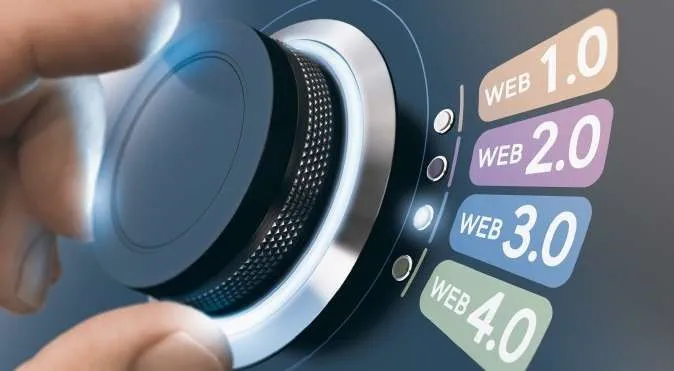
Social Equality in Tech
01 जून 2021

Dear Reader,
Why do we prize technology over everything else? Because it helps us solve problems as efficiently as possible. No one can predict from which gender, ethnicity or nationality the next great idea might come from. And the tech startup sector is a living embodiment of that.
Moving to another part of the world for employment does pose a challenge. And since most tech jobs are located at specific hotspots, many talented workers always find themselves unemployed. Software as a Service products and services are enabling employers to find and employ talent from all over the world. Remote working, work from anywhere and digital nomadism are slowly becoming the new normal. Digital marketing firm Loganix understands the potential of having a diverse team. The company runs almost all its operations globally — with teams of people from the US, Asia, Australia and Europe —employees are dynamically moved between different teams, depending on requirements, allowing quick resolution of issues.
Poor or different communication skills can fuel many workplace misunderstandings. And it costs quite a bit of time and money to learn a new language. The US Foreign Services Institute estimates that it takes on an average 480 hours to gain basic competence in languages. This was a problem that cloud-based tuition service Preply aimed to fix. The platform offers a place for both language tutors and students to collaborate easily and affordably.
Tutors can create their profiles with rates, experience and number of languages spoken; and students can review their tutors, making it easy for other students to decide who to hire. Workers planning to move to another country can use such services to learn a new language far cheaper than attending a language school. HR teams can also hire tutors to educate employees who need to go abroad or new recruits from other countries.
Social inequality isn’t always about creed, gender or nationality. Entrepreneurs are usually handicapped due to high entry barriers in business. Indeed, the cost of acquiring customers is every bit the startup killer it is known to be. Oleg Campbell, a Ukrainian developer who bootstrapped his startup, Reply, to a $2 million a year company, certainly identifies with the struggle. Campbell’s lack of sales experience stalled the growth of his first enterprise. Consequently, he focused his efforts on helping tech entrepreneurs overcome their lack of salesmanship with smarter tools. Reply’s LinkedIn email finder is specifically for new companies looking for affordable, effective lead generation. Such a tool can help a user find email addresses of prospects on LinkedIn. Paired with LinkedIn’s Sales Navigator, users can create highly personalized outreach messages for each prospect.
The tech sector can, and should, be the leader at showcasing the advantages of diversity. By championing the cause of gender diversity through socially agnostic platforms, they are leading the cause of social equality in tech.
Credits : Akhil Handa Prithwijit Ghosh
Popular Articles
Related Articles










-
Disclaimer
The contents of this article/infographic/picture/video are meant solely for information purposes and do not necessarily reflect the views of Bank of Baroda. The contents are generic in nature and for informational purposes only. It is not a substitute for specific advice in your own circumstances. Bank of Baroda and/ or its Affiliates and its subsidiaries make no representation as to the accuracy; completeness or reliability of any information contained herein or otherwise provided and hereby disclaim any liability with regard to the same. The information is subject to updation, completion, revision, verification and amendment and the same may change materially. The information is not intended for distribution or use by any person in any jurisdiction where such distribution or use would be contrary to law or regulation or would subject Bank of Baroda or its affiliates to any licensing or registration requirements. Bank of Baroda shall not be responsible for any direct/indirect loss or liability incurred by the reader for taking any financial decisions based on the contents and information mentioned. Please consult your financial advisor before making any financial decision.
Smart-Robotics for Education
With the huge potential of robotics getting unlocked every day, even educators are leveraging robotics to improve the quality of education in novel ways, providing hands-on way of teaching important concepts like mathematics and science. Teachers can showcase how simple mathematical concepts like addition, subtraction, proportion etc. are applied in the field of robotics.
These bots use the same general characteristics as industrial robots, but are much safer and less expensive to use. As per 'Global Robotics Education Industry Market Research Report', the global education robot market is estimated to reach size of around $25 billion by 2026 with a CAGR of around 23%.
One of the first robots in the educational field was released in the 1980s, called the Heathkit Educational Robot (HERO). Though it was not programmed to perform practical tasks, it was a self-contained mobile robot that was controlled by an on-board computer using a Motorola CPU and 4 KB of RAM. The educational bot featured light, sound, motion detectors and a sonar ranging sensor.
Recently, UBTECH Education and Follett have formed a partnership to create interactive JIMU robotic building block systems which enables students to develop critical STEM (Science, Technology, Engineering, and Mathematics) skills in a hands-on environment. JIMU robots are designed to complement the incremental steps of STEM success in experimentation and progressive learning by providing countless hours of creative and inspiring fun.
Similarly, NuMinds Enrichment has developed AI-powered NAO robot, which enables students to interact with the humanoid as it teaches coding, literature and simulates training environments. NuMinds programs are also enhanced with cutting-edge virtual reality (VR) goggles that integrate virtual environments and augment learning, to captivate students and enhance their experience.
Back home in India, Agilo Research, an EdTech hardware start-up, has developed STEMpedia Robotics learning platform to foster creativity and innovation among the young students. This platform was part of ‘India Innovation Growth Program’ launched by Lockheed Martin, Tata Trusts and FICCI.
Based on the innovative solutions being launched, AI and robotics can effectively improve the quality of elementary and even higher education. Besides cutting down the overall cost in generating insights in different scientific sectors, the technologies can help teachers tailor the education system to suit students with diverse learning needs.
Credits : Akhil Handa,Manish Kulkarni
Sweat Powered Watches
Dear Reader,
You have probably heard of solar powered smart watches but what about a sweat powered watch? When people talk about renewable power, sweat isn't exactly something that springs to mind, but it sounds like that this natural process is actually capable of powering fitness trackers and maybe even smart watches too. It sounds pretty crazy but scientists have figured out a way sweat could be used to replace traditional batteries.
The research was done at the University of Glasgow where scientists created a battery cell that has a new type of flexible super capacitor that can be used to replace electrolytes typically found in batteries.
The tech works by collecting the sweat a person naturally produces. This is done by “coating polyester cellulose cloth in a thin layer of a special polymer”. The absorbency of the material attracts perspiration. The ions in the sweat react with the polymer which results in a reaction that generates electricity. Researchers say the battery can be charged with only 20 micro litres of sweat. It’s also very sturdy and can survive several thousand flexes and bends it might encounter – ideal for a wearable strapped to your wrist.
So not only would sweat be a non-invasive way to check on your body's health, it would likely be a highly accurate way too, in the realm of blood in some areas – which is far more appealing than something like heart rate, which has a comparatively limited scope.
The University of Pennsylvania has combined those ideas with graphene, a material considered to be "the best sensor material in existence", to create the SweatSmart by GraphWear. Graphene would essentially allow the sweat sensor to be four times more accurate than current sensors.
Then there are companies like LVL and Halo Wearables, who are aiming a little lower with their sweat-based trackers. The company has spent the past six years working on the Halo Edge, a device that analyses your sweat to indicate hydration levels.
In the same neighbourhood is Kenzen, a company which produces the Kenzen patch, which continually tracks biosensors in your sweat and sends you real-time alerts about your health.
The tech seems promising although it is still in the research phase. But the team is planning to take forward the research on integrating sweat power into wearable devices. After all, they are the perfect option for such technology as you typically wear them while exercising. However, the best hope perhaps lies with LVL and Halo Wearables. There's a chance that bigger companies like Samsung, Apple and Fitbit will explore sweat-based wearables, but that doesn't seem to be on the horizon just yet. So it might be down to the start-ups to make the first breakthrough and hope the major wearable tech heavyweights follow.
Credits : Akhil Handa,Clint James


Leave a Comment
Thanks for submitting your details.